Review of Lemony Snicket`s A Series Of Unfortunate Events (Special Edition)
Introduction
When this movie came to the cinema I rushed to see it purely on the strength of the trailer, and the fact that my two daughters both had unhealthy pre-teen obsessions with all things `cutely gothic`. Yeah - there was definitely something `spooky` in the air 12 months ago when this was about to get its cinema run. Ruby Gloom, Emily the Strange, Lenore - the cute little dead girl etc.
Lemony Snicket books (having sold over 30 million world-wide) appeared in the book-reading public`s consciousness somehow in the shadows of the more derivative Harry Potter. They were a little stranger, a little off-kilter, a bit bleaker and deliberately and defiantly so.
So with great expectations, I imagined that this would inevitably be a great disappointment. Particularly with Jim Carrey in a lead role that I felt sure he would take so far over the top that it just wouldn`t work. And how preposterous to squeeze the first three novels into a single movie. How wrong I was.
The movie was (and remains) completely magical, Carrey perfectly cast as the horrifyingly self-focussed, hammy actor bent on killing the recently orphaned Baudelaire children in order to get his hands on their fortune.
The action is as relentless as, say, `Jumanji` with every resolution swiftly followed by a situation far worse than the previous one.
With a weird atmosphere all of its own, with roots in the Grimms fairytale tradition, as well as a story akin to Dahl at his most extreme, the whole movie is magnificently set and directed (by Brad `City Of Angels/Casper` Silberling) so that every frame is permeated with bleak, Germanic expressionism - so beloved by my pre-teen daughters!
The basic narrative in a nutshell is that of three children (Violet, Klaus and baby Sunny) losing their parents to a mysterious fire and then being sent to live with a truly despisable, sick relative Count Olaf who wants to kill them to get his hands on their fortune.
There is a classic fairy-tale sub-plot here too, that raises what could be pantomime to the truly frightening for young viewers, and that`s the fact that, despite persistent abuse and endangerment, no one ever really listens to the children. They immediately recognise Olaf in his various disguises, yet no one in authority is ever prepared to listen to them. Now that makes a scary predicament even scarier.
Carrey is just breath-taking in his various guises as the mean Count Olaf. The make-up is incredible, but so too is his performance which manages to show him as both a pantomime style villain (big eyebrows, mad hair and huge nosferatu-styled hooked nose), and as a truly despisable, attention-seeking actor. With a faux-British accent, and a shakespearian boom of a voice, Carrey is mesmerising in the lead role here. Despite the pervading melancholy, there is room for humour, and Carrey enjoys hamming up the various parts he plays.
Fourteen-year-old Violet is played by young Australian actress Emily Browning who is clearly destined for great things. Her bookworm brother Klaus is played ably by Liam Aiken, and the baby Sunny is exactly that. A really great bit of casting!
Mention should also be made of Timothy Spall`s role as a bungling buffoon of an official - keen to do the right thing, and yet totally incapable of seeing the evidence of sinister wrong-doing. And Billy Connolly offers some warm relief as the only seemingly sane and friendly adulty in the whole piece, a friendly uncle who also dies at the hands of Olaf. Meryl Streep makes an unlikely appearance as a grammar obsessed Aunt, and Dustin Hoffmann can be seen (in a fleeting cameo role) too.
Jude Law`s narration (as Snicket) is fine though unremarkable - but this sums up Law for me anyway.
Barry Sonnenfeld, best known perhaps for being the cinematographer on some of the Coen Brother`s finest movies, was Executive Producer on this movie and his influence can certainly be felt.
The stylised sets (shot 100% on the Paramount sound-stages) reek of the Coen brother`s larger than life take on things, though you could be forgiven for assuming that you were watching a Tim Burton movie too.
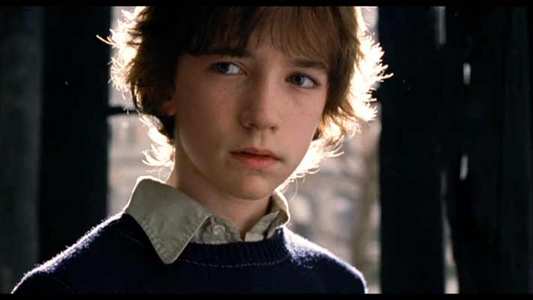
Video
Anamorphically enhanced from 1.85, this transfer is incredible. Every detail (and there`s plenty of that in this meticulously designed movie) can be seen on a digital transfer that really shows what the medium is capable of. Until we get used to High Definition, with no visible pixelation or edge enhancement, this is surely as good as it`s going to get!
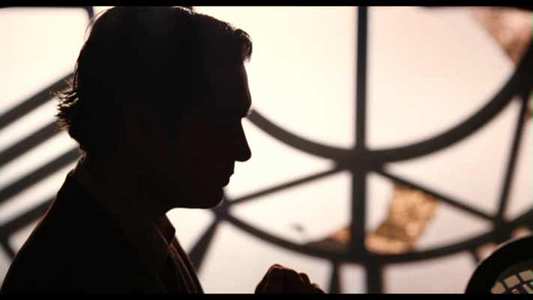
Audio
Dolby Digital 5.1 - and a very fine piece of audio-work it is too. Throughout the movie you are immersed in a swirling soundscape, and the gripping adventure sequences are greatly enhanced by creaking floorboards, crashes off picture, snake sounds, birdsong and even distant dialogue. Absolutely superb!
It also has a marvellous score by Thomas Newman that is frequently orchestral, and yet occasionally offers all the aching melancholy of single note piano playing. Faultless.
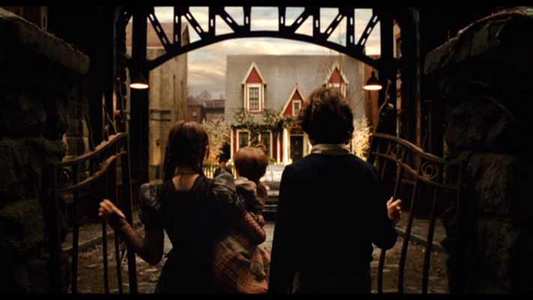
Features
I only got the first of the two discs so can`t comment on what is on the second though there are some really good extras to be found here. Not least, the brilliant menus that are gothic animations (the ones you`ll see in the closing credits to the movie), which immediately make this disc, feel different and special.
AUDIO COMMENTARIES
Not one but two, both featuring the immensely modest and likable Brad Silberling. In the first it`s the standard `Director talks us through the making of the movie`, from initial concept right through to end results. This informative and entertaining and you get the impression that making the movie was a real labour of love for Silberling -though I`m guessing the box-office success helped too!
The second is Silberling with `Lemony Snicket` himself (author Daniel Handler) and the two of them play this like a running gag throughout. Initially amusing it becomes difficult to sustain and consequently falls flat. Only for the truly dedicated!
FEATURETTES
There are three featurettes, all under the heading `Bad Beginnings`.
`Building A Bad Actor` (13 mins) has Brad Silberling discussing the various characters of Olaf - how they established the look and voice and so on. This uses a healthy mix of screen tests, home-movie style footage of make-up sessions with Carrey, and rehearsals. They illustrate how the process of characterisation incorporated much of Carrey`s original `in character` improvisations. You can see that Carrey was really enjoying himself as an actor here, and Silberling was clearly happy to use some of this energy and creativity to get the results he was looking for.
`Making The Baudelaire Children Miserable` (3 mins) is really little more than a couple of early screen-tests and what looked like an investor-pleasing trailer.
`Interactive Olaf` is a case of the ability to do something being good enough to do it. It`s an entirely superfluous 4 - way split screen that shows Carrey in full-flight in all four of the Olaf incarnations. Using the remote, you get to decide which audio you want to here.
DELETED SCENES
Entitled `Orphaned Scenes`, these comprise of both `Obnoxious Outakes` and `Dismal Deletions`.
The out-takes, other than a charming moment when Sunny falls asleep mid-way through a sequence, is just the usual un-funny mix of line-fluffs.
The deleted scenes (some 11 in total) show some fine moments trimmed out of the final-cut as well as some intriguing alternate takes. In most cases it`s easy to see why they fell foul of the editor`s scalpel though. Interestingly, there are some scenes cut pre-grading, and the raw rushes actually looked fairly unremarkable. Much must have been achieved in post.
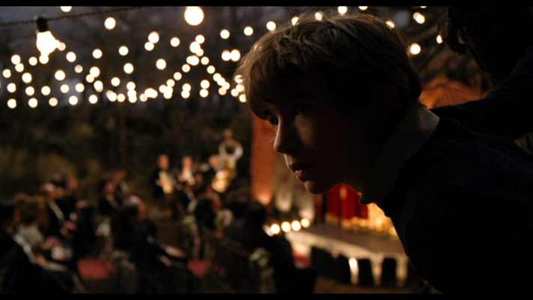
Conclusion
It`s difficult to fault this superb cinematic adaptation of the first three Lemony Snicket novels. It`s a film full of a wonderful mix of atmospheric melancholy, gripping suspense and macabre humour, and the casting and direction is faultless.
For me this is certainly Jim Carrey`s finest hour - a role that let him take his uniquely over the top take on acting to new levels, beyond the Mask and beyond even his fine performance in `The Grinch`.
It`s a thoroughly engaging fantasy, using the exclusively studio set pieces to create a uniquely individual world where every frame looks like a perfectly composed still. The sets are breath taking, the design meticulous and the colouring and grading of the final picture perfect in its swirling mix of dull sepias, silvers and grey. (See the dark misty leech infected lake as a prime example…).
My only gripe really is the unresolved (to a large degree) red-herring with regard to spy-glasses and secret societies, though maybe this becomes resolved in future tales, but mentioning this in the context of a near perfect movie is tantamount to surliness.
However - I`d like to end on A MESSAGE TO DREAMWORKS HOME ENTERTAINMENT PUBLICITY DEPARTMENT. Next time you distribute discs for review, where we reviewers put time and effort into creating copy and comment on your behalf, please think twice before sending out an insensitively violated copy like this one. Every 5 minutes or so the action, narrative and atmosphere was interrupted with captions burnt across the action that read: `Property of the Dreamworks Home Entertainment Publicity Department - Do not duplicate`. This even came up over the poignant scene at the end when Violet reads a letter from her now deceased parents. Next time I get one of these violated discs from people that clearly have no appreciation of the movie they`re supposedly publicicising, I`ll give the disc received the review it deserves - or maybe not bother at all.
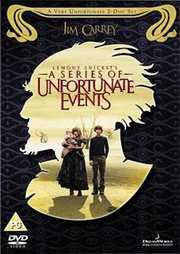




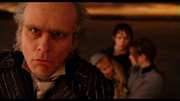
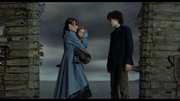
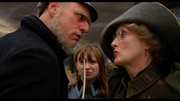
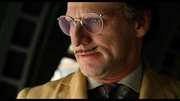
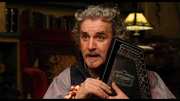
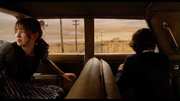
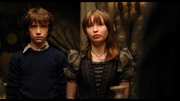
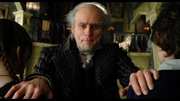
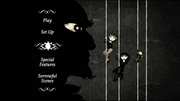
































Your Opinions and Comments
Be the first to post a comment!